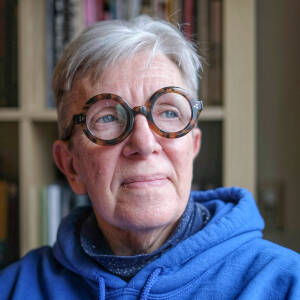Homage to Tina Modotti
First, a bow of gratitude for your responses to yesterday’s story and photo of Margie. She and I have been friends for fifteen years. I moved to Portland in 2008 knowing no one, and I joined a writing group hoping to connect with a few people. Margie was then about the age I am now. She and I spotted each other as kindred spirits immediately and have held on ever since, and I started blipping her in 2013. Your appreciation for her indomitable spirit gives me great joy.
This week has been a bonanza in terms of library books. Tuesday the books about Kusama; today a book I’ve been waiting six months to see. It’s Greater American Camera: Making Modernism in Mexico (2021). Half the book is about two women photographers I admire: Tina Modotti and Helen Levitt.
Those who are fond of the work of Vivian Maier may recall that Vivian’s mother lived for some years with a woman photographer who had been trained by Modotti.* [See edited note at the end.] I love cross-currents of influence and encouragement, friendship-legacies among women photographers and artists. O’Keeffe and Kusama. Kahlo and Modotti, Modotti and Maier.
Modotti cut her teeth on still life, but she loved photographing people, especially laborers at work. She struggled against Fascism all her adult life, and her photos appeared in leftist publications like The New Masses and El Machete. She didn’t want her work to be decorative “art” for bourgeois people who could afford to buy it and hang it in their homes; she wanted it to inspire people to action.
She mounted her one and only solo exhibition in Mexico at a library, and the book that arrived today explains, “Her target audience was not the cultured bourgeois: thousands of exhibition announcements were distributed to workers’ centers and unions, explicitly stating that the exhibition was primarily for el pueblo trabajador [the working people]…. It was attended by hundreds of students, workers, and artists….” (93). She was friends (and perhaps lovers) with Frida Kahlo, and she spent time with the photojournalist Gerda Taro. She had affairs with a number of famous men, so her story is spicy, but it’s her photographs that interest me, especially her portraits of working people, like "Worker Reading El Machete" (1925) and “Woman of Tehuantepec” (1929). (Can't get the link to the Worker photo to work, but if you're interested you can google it.)
She also made photographs of harsh industrial environments: oil tanks, telegraph lines, steel architecture, ladders. So my photo today is an homage to her: reflections on a steel door.
*Apologies for my fading brain's mistake. It was Lisette Model who mentored the woman who lived with Maier's mother. Sigh. It was the M initial of the last name that confused me. So in fact Modotti had nothing to do with Maier.

Comments
Sign in or get an account to comment.


